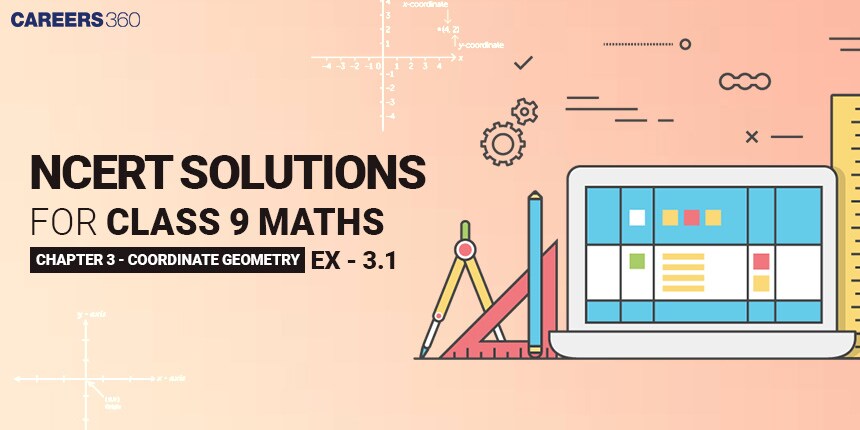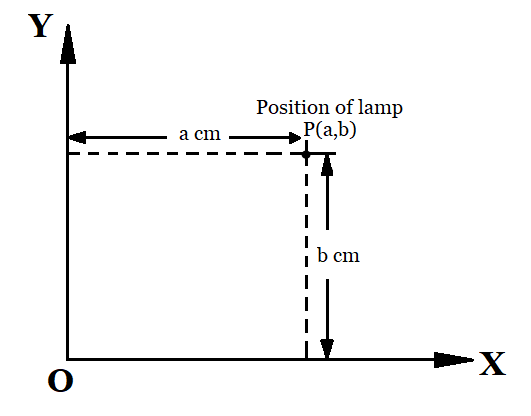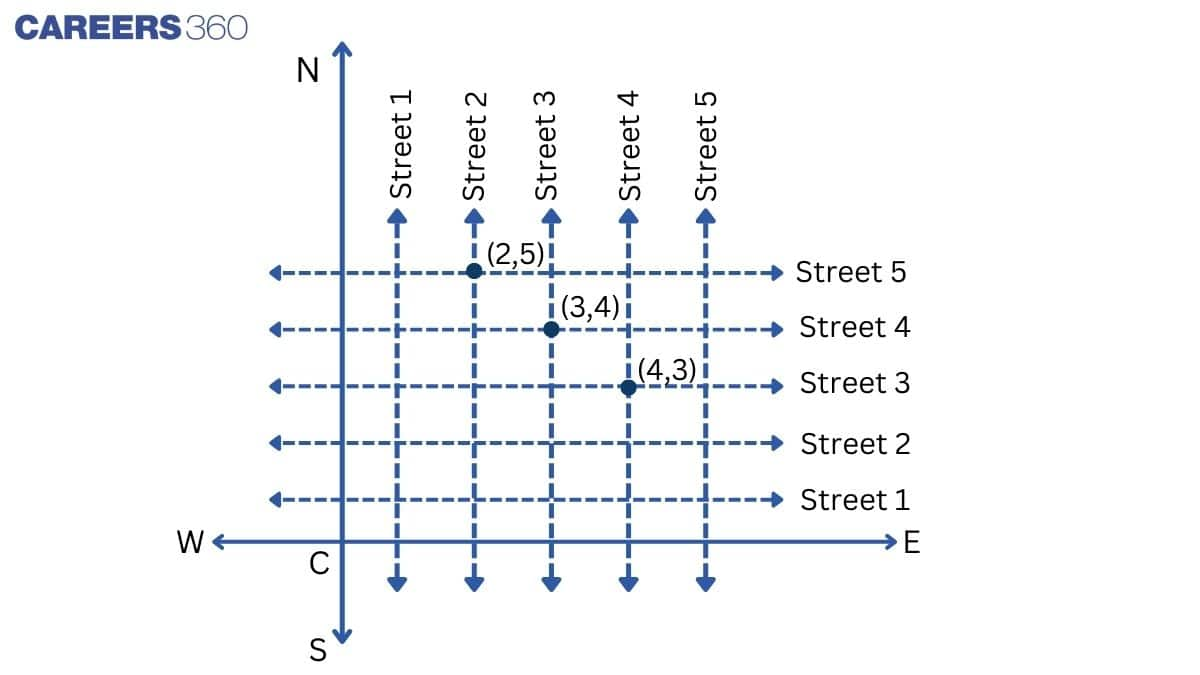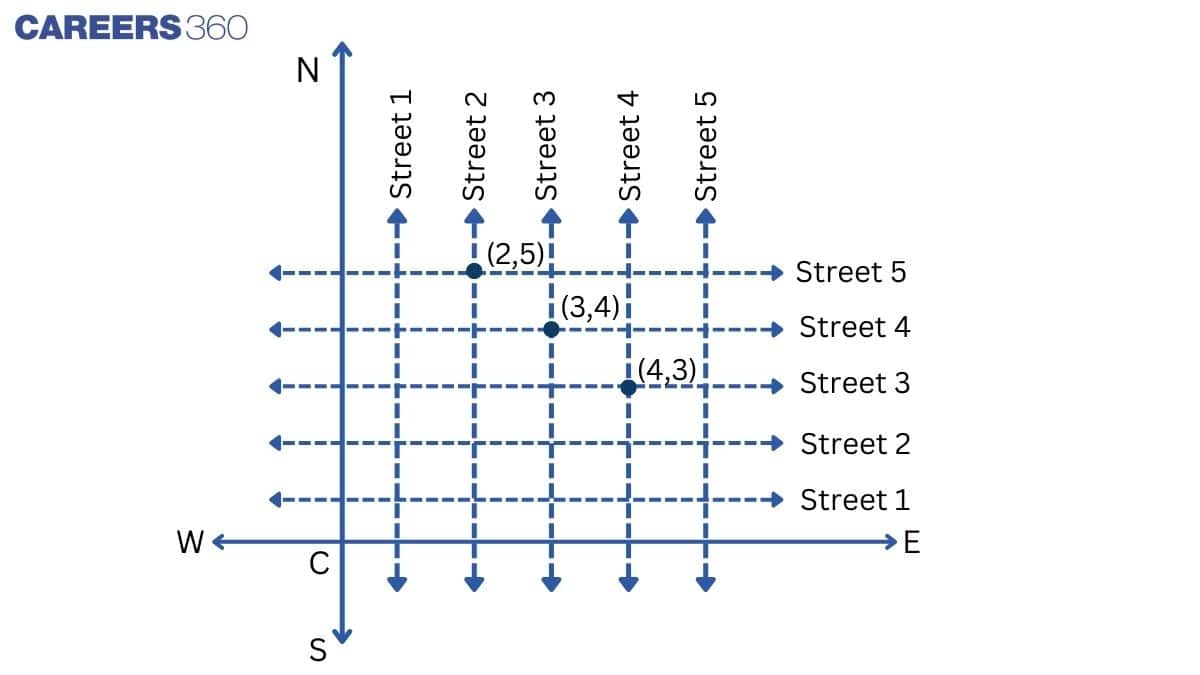NCERT Solutions for Class 9 Maths Chapter 3 Exercise 3.1 - Coordinate Geometry
Coordinate geometry uses one or more numbers or coordinates to determine the position of points or other geometric elements in the Cartesian plane. It is an important concept that uses graphs and curves to provide links between geometry and algebra. To describe the position of a point in a plane Cartesian system is used. In this Cartesian system, one horizontal and one vertical line are used, and the point where these two lines intersect is called the origin, and it is denoted by $O$.
This Story also Contains
- NCERT Solutions for Class 9 Maths Chapter 3- Coordinate Geometry Exercise 3.1
- Access Coordinate Geometry Class 9 Chapter 3 Exercise 3.1
- Topics covered in Chapter 3 Coordinate Geometry: Exercise 3.1
- NCERT Solutions of Class 9 Subject Wise
- Subject-Wise NCERT Exemplar Solutions

In exercise 3.1 Class 9 Maths, we have given an idea about how to write the coordinates of a location, how to find the coordinates, how it is applied and when we can use it in real life. In the NCERT solutions for Class 9 Maths exercise 3.1, the focus is on how to apply coordinate geometry in real-life applications and gives us the essence of the importance of this branch of mathematics. These solutions provided for exercise 3.1 class 9 maths are created by subject experts at Careers360, ensuring a detailed and easily understandable explanation. This exercise typically consists of two questions, each with various parts. Additionally, the class 9 maths chapter 3 exercise 3.1 is accessible in PDF format, allowing students to use it offline at their convenience, free of cost. Apart from NCERT solutions, the NCERT Books serve as a valuable resource to aid in understanding and mastering the mathematical concepts presented in this exercise.
Access Coordinate Geometry Class 9 Chapter 3 Exercise 3.1
Q1 How will you describe the position of a table lamp on your study table to another person?
Answer:
To describe the position of a table lamp placed on the table,
Let us consider the table lamp as P and the table as a plane.
Then, we consider two perpendicular edges of the table as the axes OX and OY.
From OY measure the perpendicular distance $'a'\ cm$ of P.
From OX measure the perpendicular distance $'b'\ cm$ of P.
Thus, the position of the lamp is then given by;

Q2 (i) (Street Plan) : A city has two main roads which cross each other at the centre of the city. These two roads are along the North-South direction and East-West direction. All the other streets of the city run parallel to these roads and are 200 m apart. There are 5 streets in each direction. Using 1cm = 200 m, draw a model of the city on your notebook. Represent the roads/streets by single lines.
There are many cross- streets in your model. A particular cross-street is made by two streets, one running in the North-South direction and another in the East-West direction. Each cross street is referred to in the following manner: If the 2 nd street running in the North-South direction and 5 th in the East-West direction meet at some crossing, then we will call this cross-street (2, 5). Using this convention, find: how many cross - streets can be referred to as (4, 3).
Answer:
(i) From the figure:

There is only one cross-street which can be referred to as (4, 3).
There are many cross- streets in your model. A particular cross-street is made by two streets, one running in the North-South direction and another in the East-West direction. Each cross street is referred to in the following manner: If the 2 nd street running in the North-South direction and 5 th in the East-West direction meet at some crossing, then we will call this cross-street (2, 5). Using this convention, find: how many cross - streets can be referred to as (3, 4).
Answer:
(ii) From the figure:

The cross street is shown by the point $B(3,4).$
We have located the one cross street.
Also Read:
Topics covered in Chapter 3 Coordinate Geometry: Exercise 3.1
1. Definition of coordinate geometry, Cartesian system, origin, quadrants, Abscissa, Ordinate, Collinear Points.
2. Distance Formula to determine the distance between two points.
3. Midpoint Formula to find the midpoints of the coordinates.
4. Section Formula, to find the coordinates that divide the line segment into a given ratio.
Also See
NCERT Solutions of Class 9 Subject Wise
Students must check the NCERT solutions for Class 9 Maths and Science given below:
Subject-Wise NCERT Exemplar Solutions
Students must check the NCERT exemplar solutions for Class 9 Maths and Science given below:
Frequently Asked Questions (FAQs)
Coordinates are used throughout the world for various purposes such as in scientific inventions, world maps to find the location as well as in construction and there are many more examples without coordinate we cannot grow a civilization
In Class 9 Mathematics chapter exercise 3.1, there are two problems.
Both questions are about the real-life application of coordinates question is creating a simulation of lamp and we have to move it in the second question has two subparts and it is about arrangements of road
The study of geometry using the coordinate points is known as coordinate geometry
Are a way to find the location of any object on two dimensional or three-dimensional plane
There is one activity covered before exercise 3.1 Class 9 Maths which is about the seating arrangement of seats of students
René Déscartes. Developed the cartesian system
René Déscartes is the great French mathematician of the seventeenth century and he developed the cartesian system.
Popular Questions
Courses After 12th
Study Resources, Applications and Opportunities
Take Aakash iACST and get instant scholarship on coaching programs.
NEET Most scoring concepts
Get nowThis ebook serves as a valuable study guide for NEET 2025 exam.
NEET Previous 10 Year Questions
Get nowThis e-book offers NEET PYQ and serves as an indispensable NEET study material.
JEE Main Important Physics formulas
Get nowAs per latest syllabus. Physics formulas, equations, & laws of class 11 & 12th chapters
JEE Main Important Chemistry formulas
Get nowAs per latest syllabus. Chemistry formulas, equations, & laws of class 11 & 12th chapters
JEE Main high scoring chapters and topics
Get nowAs per latest 2024 syllabus. Study 40% syllabus and score upto 100% marks in JEE

